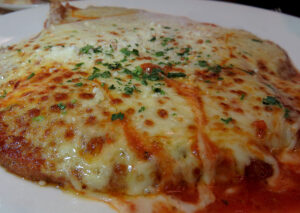Can it be true? My 33rd wine article on RehobothFoodie.com since Kevin and I took over Teller Wines almost three years ago! Let me just say (without any remuneration from the esteemed Foodie himself) a big “Thank You” for giving me this platform on which to express my deepest love of everything wine. [Catherine: RF.com is better because of your articles. –ed.] My husband of thirty-two years will agree that when it comes to wine and food, he happily plays second fiddle (though he knows he is and will always be my only Valentine).
So I thought with Valentine’s Day fast approaching, I would write about ice wines and sauternes. Because they are the sweetest wines on the market, and a timely treat for those with a sweet tooth. (A quick caveat: Dessert wines such as ice wines and sauternes should not be sipped with most sickeningly sweet desserts. They will make your teeth hurt, plus numb your palate so you can’t taste, either.) Those of you who have been reading my articles will remember I touched on late harvest and ice wines in my articles on Ports and Ice Ciders.
So what are ice wines exactly? They were actually an accident, first produced in Germany, when an early fall frost froze the grapes before they could be harvested. To the delight and surprise of the winemakers, the wines produced from these frozen grapes were sweet, intensely flavored, and delicious! Now they are also produced at Inniskillin, on the Niagara Peninsula of Ontario, not very far from Niagara Falls. In fact, Canada has become the leading producer of ice wines. They are usually available in cute half-bottle sizes, to be enjoyed judiciously.
Ice wine is basically a type of late-harvest wine that's made from grapes that are left on the vine so far past the typical growing season that they actually freeze before they are picked. Because the water inside the grapes freezes while sugar and other solids do not, the result is an even more highly concentrated and sweet wine. (There are also “icebox” or “iced” wines made from grapes that are picked and then frozen mechanically.)
Most ice wines are produced from grapes that have been frozen to 17 degrees Fahrenheit, attaining a minimum of 35% sugar by weight (measured in “brix”). So, you may ask, what is the difference between ice wines and late harvest wines? Well, the short answer is all ice wines are also late-harvest wines, but not all late-harvest wines are ice wines. Both ice wines and late-harvest wines are made in a very sweet style. Late-harvest wines are made from grapes left on the vine longer than usual, allowing them to get more ripe. This makes the grapes naturally dehydrate, concentrating their flavors as they take on sweet, raisin-like qualities. (See the latest news on ice wines from the Finger Lakes, N.Y. in Teller Wines’ weekly eNewsletter. To sign up, go to our website www.tellerwines.com.)
Sauternes is a dessert wine with varying sweetness. These wines are originally from the Sauternais and Barsac regions south of Bordeaux. They are now making a comeback, having suffered from the general urge to trim calories in decades past. As is recommended, a little goes a long way, so start with half bottles. A fine Sauternes is often the perfect way to finish a fine meal in France and other civilized countries.
Sauternes are also late harvest wines. The grapes are picked when mists are created in the humid fall, causing a mold to attack the grapes. The trick, which requires considerable skill, is to harvest the grapes, which now look like raisins, at exactly the right moment before the grapes become useless. It is a skilled and labor-intensive process. A string of fine recent vintages, including 2005, 2007, 2009 and 2010, 2012, favors the discriminating consumer. Maurice Chevalier was rumored to have been a Sauternes junkie. The most highly prized vintages of Premiere Cru Sauternes from Preignac are often served by the President of France at state dinners. The various Chateaus producing this gem of a wine jockey for prestige, as the French are known to be somewhat “classist” when it comes to their wine.
At Teller, in our “Noble & Sticky” flavor profile section (where else?), we have several Sauternes and ice wines. The half bottles are just adorable as you’ll see in the photos. Here’s a sampling: Maldonado (California), made with Sauvignon Blanc and Semillon grapes, this wine is aromatic with a lifted nose of dried apricot and sugared lemon peel. The Chateau Roumieu is from Sauternes, France and is made with 100% Semillon grapes. It is pretty and balanced, with apple, apricot and vanilla characters. Medium bodied with a hint of cream, you may enjoy this one all on its own.
The LillyPilly from Australia is made with Semillon, Riesling, Sauvignon Blanc, and Chardonnay. The flavors are pineapple, apricot, orange peel and lychees. A lighter style with lively acidity, this wine pairs well with fruit and custard-based tarts or blue cheese. The Kiona ice wine from Washington State is made with 100% Chenin Blanc. Aromas of honeysuckle and tropical pineapple practically leap out of the glass. The intense sweetness is framed by generous acidity, elegant herbaceous grasses, and ripe apricot.
With the deep freeze of the winter upon us, pick up a bottle (or half) of a lovely ice wine or Sauternes to share with you sweetie in front of the fire. Keep in mind the sweetness level of these wines necessarily means the alcohol level is a bit lower. Nevertheless, you may find yourselves head over heels in love! Dessert never tasted so good.

































